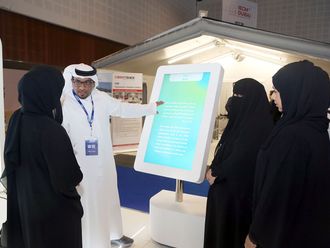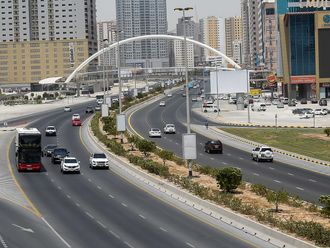Sharjah: Residents of the emirate of Sharjah use the lowest amount of water per day in the UAE, not least because of an official conservation campaign, a new report suggests.
The emirate’s per capita daily consumption is around 200 litres — less than half the national average — according to the weekly Economist magazine.
Its ‘The World in 2014’ report said Sharjah’s rate is within UN recommendations, due mainly to efforts by the Sharjah Electricity and Water Authority (Sewa).
The report said Sewa’s free installation of water-saving devices had slashed consumption by up to 40 per cent.
Water use is a concern in the UAE, a desert with scare freshwater sources. It heavily depends on coastal desalination plants, which process saltwater from the sea, to meet rising demand from rapid population and infrastructure growth.
“Financially, the water production and treatment is expensive. Seawater desalination plants consume energy and money, so water conservation will relieve pressure on these plants and reduce the financial impact of drinking-water treatment,” said Ghada Juma, director of Sewa conservation department.
In Sharjah, the conservation initiatives are part of Sewa’s Tarsheed (rationalisation) campaign. Sewa chairman Dr Rashid Al Leem said Tarsheed was making waves in the community.
Representatives recently visited a number of suburban housewives to heighten conservation awareness, besides sending text messages and placing TV and radio ads.
The efforts also cover lectures at schools and universities, hospitals, public departments and sports clubs. To reach children, the campaign created mascots to simplify conservation messages.
Tarsheed also distributes brochures and posters in different Sharjah areas as a part of a year-long awareness campaign.
The conservation efforts were ramped up in 2009 with water-saver distributions lasting two years.
Some tap aerators in the saving kits can reduce water consumption by almost 80 litres per day, Ghada said.
“After that, a lot of companies started commercialising the water-saving devices, and some of them are now part of the Sewa requirements prior to the water connection to new buildings,” she added.
Generally, the biggest “water wasters” are toilet flush tanks, showers and garden irrigation systems, she added.
“Water is precious natural resource and it’s vital to human life and economic activities. In arid regions like the Middle East, the challenge is to preserve this valuable resource, and rationalise its consumption to ensure the sustainability of water for the next generation.”












